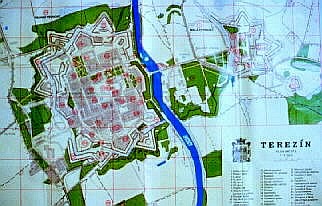
Fortress and enclosed city, Terezin, to left of Eger River
and Little Fortress to right of river.
Terezin (Theresienstadt) Concentration Camp,
Czech Republic
(all photographs by J. Gerencher)
Terezin was built as a fortress and garrison town in 1780 by Emperor Joseph
II. Located about 40 miles north of Prague, near the confluence of the
rivers Elbe and Eger, it consists of a larger fortress and enclosed town which was designed to
house about 7000 soldiers and their families, and a smaller fortress on the
opposite bank of the Eger River. Both fortresses have thick earthen walls,
which are faced with brick and are surrounded by moats.
The Nazis occupied Czechoslovakia in 1939 and used
Theresienstadt, the name they give to it, as a Jewish ghetto from 1941 to
1945. During this time, it housed over 141,000 inmates, of whom 33,500
died in the camp, and 88,000 were transported to extermination centers in the
East. Of those transported, only 3500 survived to the end of WW
II.
The Little Fortress was converted to a prison for use during WW
I, but was reopened as a prison by the Nazis in 1940 and was subsequently used
as a punishment block for the inmates from Theresienstadt. Approximately
30,000 prisoners passed through the Little Fortress, many to the extermination
camps in the East. About 2000 inmates were executed in the Little Fortress
by the Nazis.

Fortress and enclosed city, Terezin, to left of Eger River
and Little Fortress to right of river.
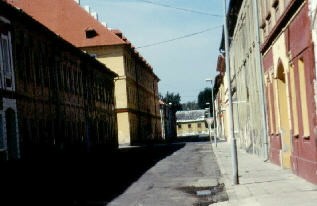
The streets within the main fortress of Terezin
were narrow and the housing was closely spaced.
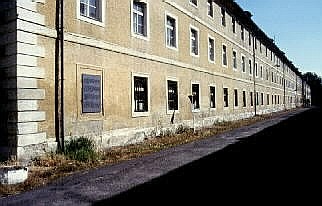
Housing for the soldier families within Terezin was plain.
These housing structures in the main garrison were used for
ghetto housing during the interval 1941 to 1945.
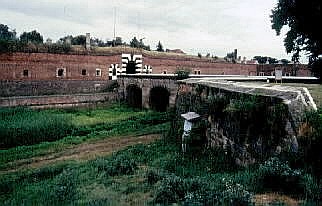
Entrance to Little Fortress with bridge that crosses moat,
which is now dry and contains grass.
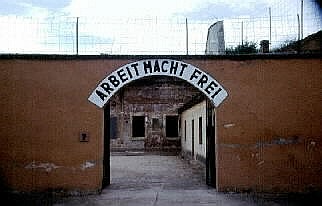
"Arbeit Macht Frei" means "Work Sets You Free,"
over the entrance to a prison yard in the Little Fortress.
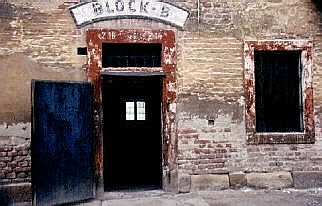
A cell block for holding a group of prisoners,
Little Fortress.
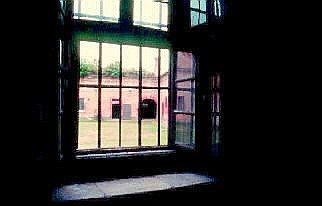
The view from a cell interior, Little Fortress.
After the defeat of the German army, the Germans were expelled from Czechoslovakia and the town was again named Terezin. Today Terezin is a part of the Czech Republic and is a functioning city within the former fortress walls. Within Terezin there is a museum which gives an account of the history of the fortress and the events that took place here during the period 1941 to 1945. Little Fortress is currently operated as a memorial and park. A small admission is charged for entrance to the museum and to Little Fortress.